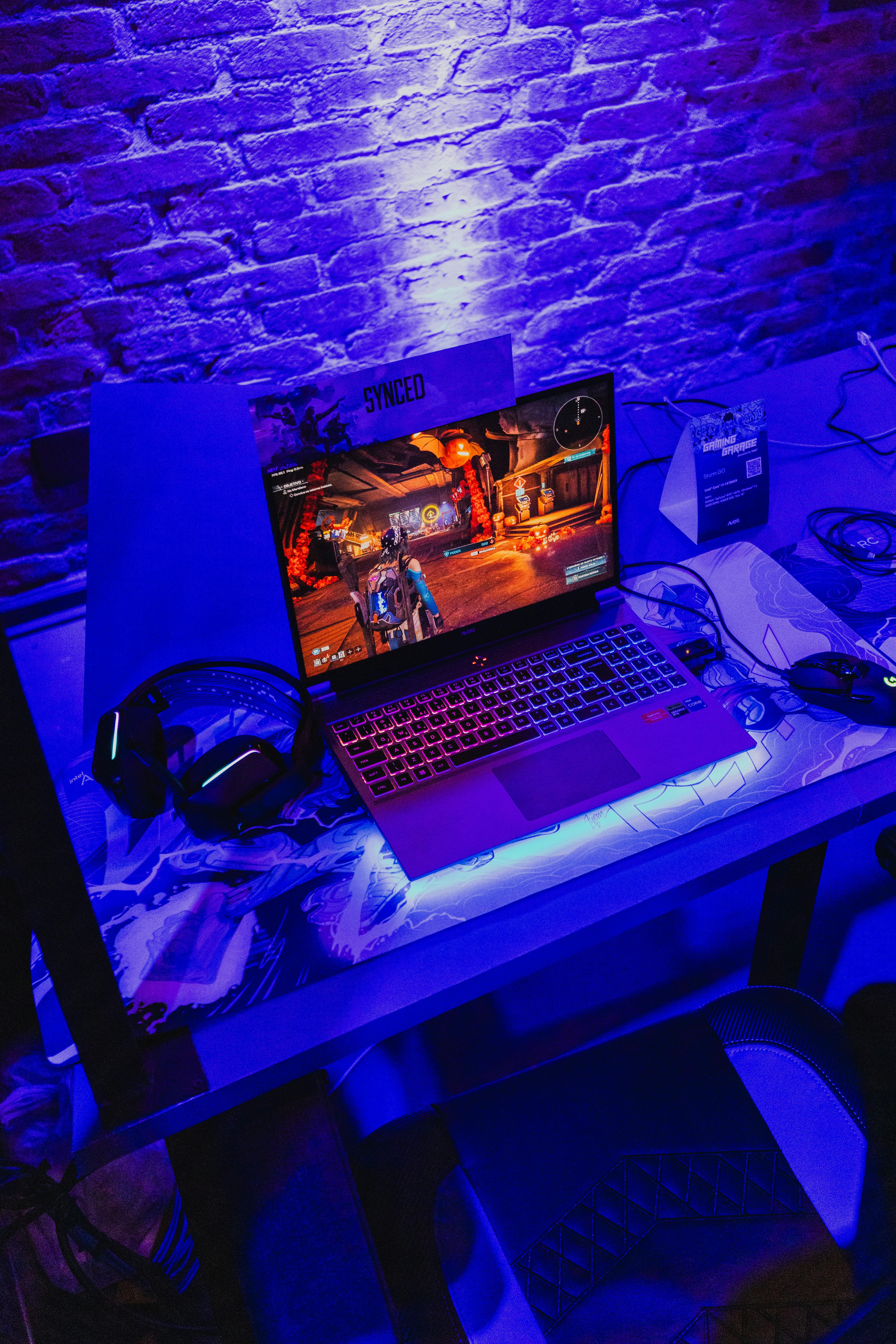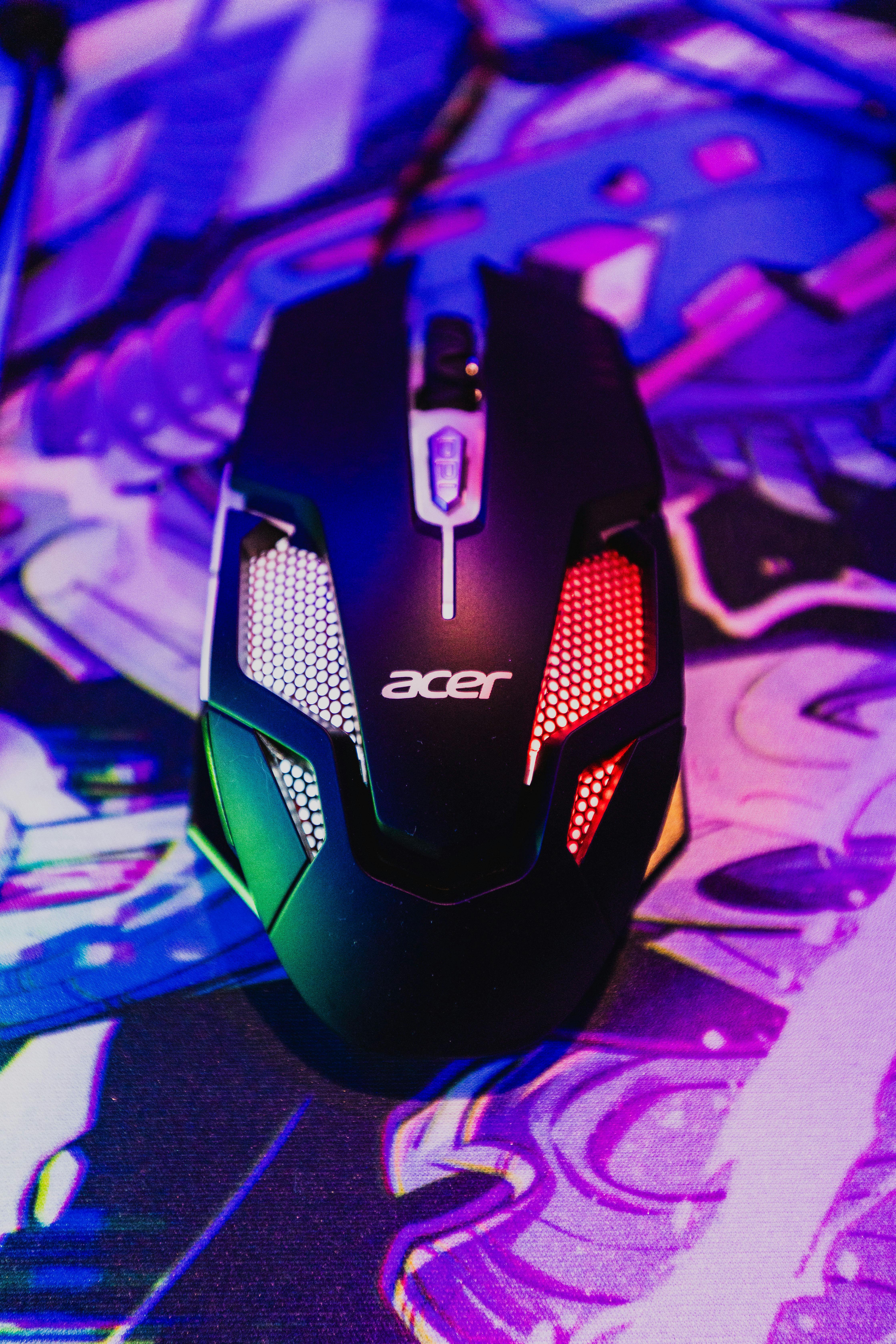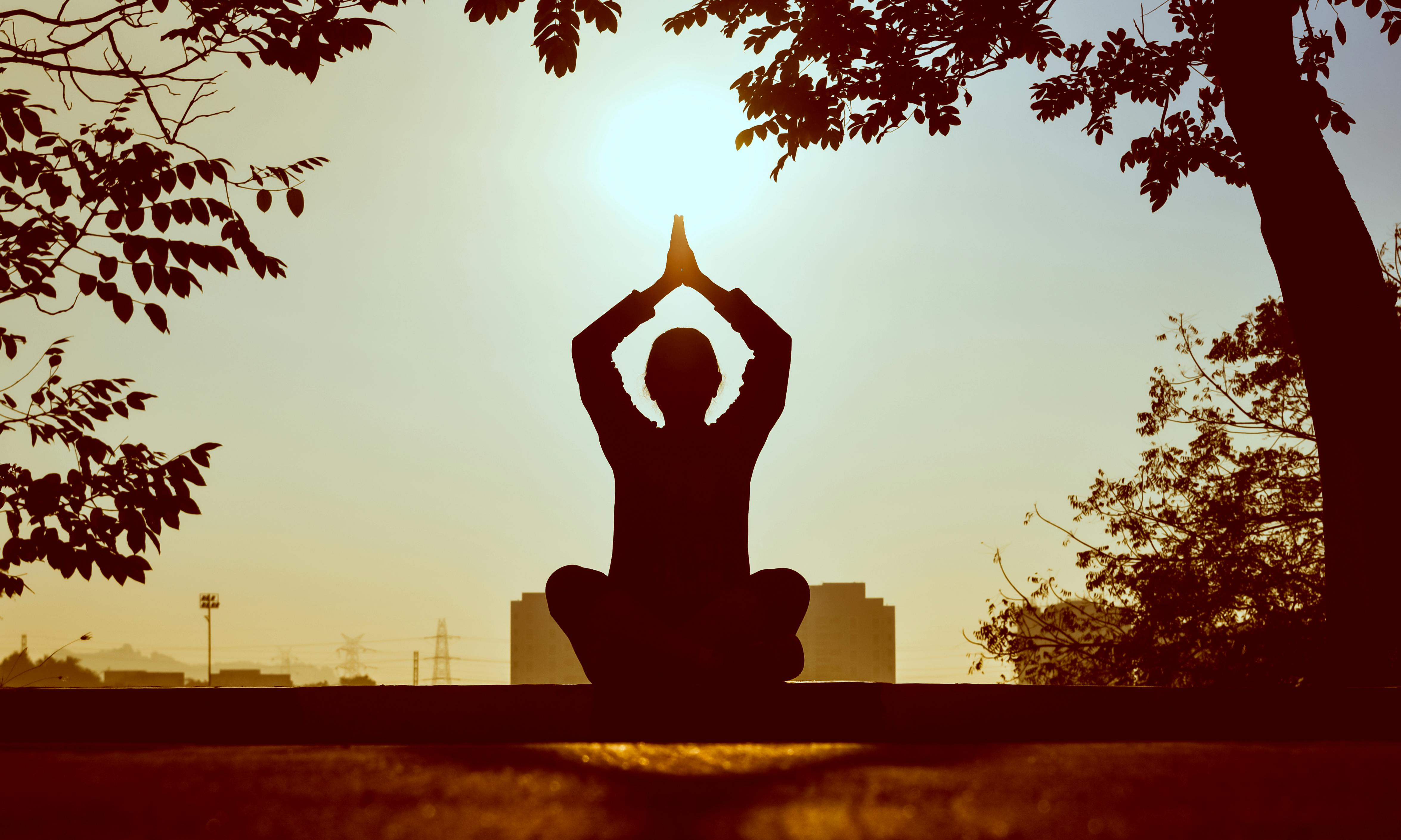Are you tired of using your fitness tech device solely for tracking your workouts? Well, you’ll be delighted to know that there’s a whole new dimension to explore. Imagine transforming your device into a tool for guided meditation and relaxation. Yes, you heard that right! Learn how you can leverage the capabilities of your fitness tech device to find inner peace and calm amidst the chaos of everyday life. It’s time to unlock a new level of mindfulness and vitality, all at the touch of a button.

Understanding Fitness Tech Devices
What is a fitness tech device?
A fitness tech device is a wearable or portable electronic device designed to assist individuals in tracking and monitoring their physical activity and overall fitness levels. These devices are equipped with various sensors and features that allow users to keep track of their steps, calories burned, heart rate, sleep patterns, and more. While fitness tech devices are commonly used for tracking workouts and achieving fitness goals, they can also be utilized for guided meditation and relaxation.
Types of fitness tech devices
There are several types of fitness tech devices available in the market today. The most popular ones include fitness trackers, smartwatches, and meditation headbands. Fitness trackers are typically worn on the wrist and focus on monitoring physical activities, such as steps taken, distance covered, and calories burned. Smartwatches, on the other hand, provide more advanced features like heart rate monitoring, sleep tracking, and app integration. Meditation headbands are specifically designed for meditation purposes and often utilize sensors to measure brainwaves and provide feedback on the user’s mental state.
Features of fitness tech devices
Fitness tech devices come with a wide range of features that cater to different user needs. Some common features include heart rate monitoring, GPS tracking, sleep tracking, music playback, and notification alerts. For guided meditation and relaxation, fitness tech devices often offer built-in meditation apps, breathing exercises, and relaxation techniques. These features can be incredibly helpful in achieving a calmer mind, reducing stress and anxiety, and improving overall mental well-being.
Benefits of Guided Meditation and Relaxation
Improved mental well-being
Engaging in guided meditation and relaxation practices can have numerous benefits for your mental well-being. By taking the time to tune into your thoughts, feelings, and sensations, you can develop a deeper understanding of yourself and cultivate a sense of inner calm. Regular meditation can help reduce symptoms of depression and anxiety, enhance self-awareness, improve emotional health, and promote a more positive outlook on life.
Reduced stress and anxiety
In today’s fast-paced world, stress and anxiety have become common challenges for many individuals. Guided meditation and relaxation techniques can be powerful tools in managing and reducing these stressors. By focusing your attention on the present moment, practicing deep breathing exercises, and letting go of negative thoughts, you can activate your body’s relaxation response and experience a sense of peace and tranquility.
Enhanced focus and attention
The practice of guided meditation can also sharpen your focus and improve your ability to concentrate. By training your mind to stay present and not get caught up in distractions, you can develop better mental clarity and enhance your productivity. Regular meditation practice has been shown to increase attention span, enhance cognitive function, and improve overall brain health.

Fitness Tech Device Functions for Guided Meditation
Built-in meditation apps
Many fitness tech devices come with built-in meditation apps that offer a wide range of guided meditation sessions. These apps often provide a variety of meditation styles, such as mindfulness, loving-kindness, and visualization. Through these apps, you can choose the duration and focus of your meditation, customize background sounds, and track your progress over time. Some advanced apps even incorporate biometric data from your fitness tech device, such as heart rate and stress levels, to personalize your meditation experience.
Heart rate monitoring for relaxation
Heart rate monitoring is a valuable feature that can be utilized during meditation to achieve deeper states of relaxation. By tracking your heart rate, you can gauge your physiological response to stress and use it as a feedback mechanism to guide your relaxation techniques. Fitness tech devices equipped with heart rate sensors can provide real-time information and help you monitor your heart rate variability, a measure of the changes in time intervals between your heartbeats. This data can indicate your level of stress and guide you towards a calmer and more relaxed state.
Breathing exercises and techniques
Fitness tech devices often offer various breathing exercises and techniques to facilitate relaxation and deep breathing during guided meditation. These exercises usually involve inhaling and exhaling deeply at specific intervals to promote a state of calmness and relaxation. Fitness tech devices can provide visual and haptic cues to guide your breathing, making it easier to synchronize your breath with the guided meditation instructions. By practicing these techniques regularly, you can develop a deep and consistent breathing pattern that induces relaxation and reduces stress.
Choosing the Right Fitness Tech Device for Meditation
Compatibility with meditation apps
When choosing a fitness tech device for guided meditation, it is important to consider its compatibility with meditation apps. Check if the device supports popular meditation apps that offer a wide range of guided sessions and customizable features. Make sure the device can seamlessly integrate with these apps to provide a smooth and user-friendly experience. Compatibility allows you to explore different meditation styles and maximize the benefits of guided meditation.
Accuracy of heart rate monitoring
If you intend to utilize heart rate monitoring for relaxation during meditation, accuracy is a crucial factor to consider when selecting a fitness tech device. Look for devices with advanced sensor technology that can provide accurate and reliable heart rate measurements. This ensures that you receive accurate feedback on your stress levels and can effectively guide your relaxation techniques based on the data provided.
Battery life for longer sessions
For those who prefer longer meditation sessions, battery life is an essential consideration. Choose a fitness tech device that offers a long-lasting battery life, allowing you to engage in uninterrupted meditation sessions without the fear of your device running out of power. Look for devices that offer extended battery life in meditation mode or have quick charging capabilities so that you can quickly replenish the battery whenever needed.

Meditation Apps for Fitness Tech Devices
Popular meditation apps
There is a wide variety of meditation apps available for fitness tech devices, each with its own unique offerings and features. Some popular meditation apps include Headspace, Calm, Insight Timer, and Aura. These apps provide guided meditation sessions, sleep aids, breathing exercises, and mindfulness exercises. They often have vast libraries of content, ranging from short meditation sessions to programs designed for specific goals, such as stress reduction, better sleep, or increased focus.
Features to look for in an app
When choosing a meditation app for your fitness tech device, consider the features that align with your meditation goals and preferences. Look for apps that offer a diverse range of meditation styles, lengths, and themes to cater to your specific needs. It can also be beneficial to choose an app that provides progress tracking, mindfulness reminders, and personalized recommendations based on your meditation history and preferences.
Syncing with your fitness tech device
Ensure that the meditation app you choose is compatible and can sync seamlessly with your fitness tech device. This allows for a more integrated experience by combining the features and data from both the app and the device. Syncing your meditation app with your fitness tech device enables you to track your meditation progress, access additional features, and receive personalized insights and recommendations for a more effective practice.
Creating Custom Meditation Programs
Setting meditation goals
To make the most out of your meditation practice, it is important to set clear meditation goals. Reflect on what you hope to achieve through meditation, whether it’s reducing stress, improving focus, cultivating self-compassion, or enhancing overall well-being. Once you have identified your goals, you can customize your meditation programs accordingly, selecting guided sessions and exercises that align with your desired outcomes.
Creating personalized meditation routines
Fitness tech devices provide the opportunity to create personalized meditation routines that suit your preferences and schedule. Utilize the features of your fitness tech device to schedule regular meditation sessions based on your availability and desired duration. Customize your routines by selecting specific meditation styles, breathing techniques, and relaxation exercises that resonate with you. Creating personalized meditation routines ensures consistency and allows you to develop a sustainable meditation practice.
Tracking progress and achievements
One of the advantages of using fitness tech devices for guided meditation is the ability to track your progress and achievements. Take advantage of the tracking features of your device and meditation app to monitor your meditation duration, frequency, and any milestones you reach along the way. Tracking your progress can provide motivation, accountability, and a sense of accomplishment, encouraging you to continue and evolve your meditation practice.
Utilizing Biofeedback for Relaxation
Biofeedback and its benefits
Biofeedback involves the use of technology to monitor and provide feedback on physiological responses of the body. This information can help individuals gain awareness and control over functions that are normally involuntary, such as heart rate, breathing, and stress levels. Utilizing biofeedback for relaxation during meditation can enhance the effectiveness of the practice by providing real-time feedback on the impact of your mental state and breathing techniques on your body.
Monitoring heart rate variability
Heart rate variability (HRV) is a measure of the variation in time intervals between consecutive heartbeats. It is an indicator of the body’s ability to adapt to stress and maintain balance. Fitness tech devices equipped with HRV monitors can track and analyze your heart rate variability, providing insights into your level of relaxation and stress. During meditation, monitoring your HRV can indicate if you have entered a state of deep relaxation and guide your breathing and relaxation techniques accordingly.
Guided relaxation using biofeedback
Fitness tech devices utilize biofeedback to guide your relaxation practice during meditation. By connecting your device and app, you can receive real-time feedback on your stress levels, heart rate, and breathing patterns. This feedback can help you adjust your relaxation techniques and breathing exercises to achieve a state of calmness more effectively. Visual and audio cues, such as calming visuals or soothing sounds, can also be integrated with biofeedback to further enhance relaxation.
Improving Sleep Quality with Fitness Tech Devices
Sleep tracking and analysis
Fitness tech devices are often equipped with sleep tracking features that monitor your sleep patterns and provide detailed analysis. By wearing your device overnight, it can track the duration and quality of your sleep, including the time spent in different sleep stages, such as deep sleep and REM sleep. Sleep tracking data can help you identify patterns and make adjustments to improve your sleep quality, such as adjusting bedtime routines or optimizing your sleep environment.
Sleep-inducing sounds and music
Some fitness tech devices offer sleep-inducing sounds and music that can help you relax and fall asleep more easily. These sounds, such as white noise, nature sounds, or calming melodies, create a soothing environment that promotes relaxation and supports better sleep. By incorporating these sleep-inducing sounds into your nighttime routine, you can create a peaceful ambiance that prepares your mind and body for a restful sleep.
Smart alarms for gentle awakenings
Waking up abruptly to loud alarms can leave you feeling groggy and disoriented. Fitness tech devices often feature smart alarms that use gentle vibrations or soft sounds to wake you up gradually and naturally. These alarms are designed to rouse you from sleep during a lighter sleep stage, ensuring a more peaceful and refreshing awakening. By syncing your sleep tracking data with your smart alarm, you can optimize the alarm settings to wake up at the most suitable time within your desired wake-up window.
Integrating Wearable Fitness Tech Devices
Using smartwatches for guided meditation
Smartwatches are versatile fitness tech devices that can be effectively integrated into your guided meditation practice. With a smartwatch, you can access meditation apps, control guided sessions, and monitor your heart rate in real-time. The convenience of having your guided meditation directly on your wrist allows for more flexibility and portability, enabling you to engage in meditation sessions wherever you are. Smartwatches also often have additional features like reminders and notifications that can help you establish a consistent meditation routine.
Haptic feedback for relaxation cues
Haptic feedback refers to the use of vibrations and tactile sensations to provide cues and prompts. Many fitness tech devices incorporate haptic feedback as a means to guide relaxation during meditation. This feature allows your device to gently vibrate or tap your wrist at specific intervals during the meditation session, serving as a reminder to focus on your breath or bring your attention back to the present moment. Haptic cues can deepen your relaxation experience by keeping you grounded and engaged in the practice.
Integration with other health apps
Wearable fitness tech devices often have the capability to integrate with other health apps, creating a holistic approach to wellness. For example, your fitness tech device can sync with nutrition apps to track your diet and hydration, motivating you to fuel your body for optimal meditation practice. Integration with mindfulness apps allows you to correlate your meditation practice with other aspects of your well-being. These integrations provide a comprehensive overview of your health and well-being and allow for a more holistic approach to self-care.
Tips for Effective Meditation and Relaxation
Finding a quiet and comfortable space
To enhance your meditation and relaxation experience, it is important to find a quiet and comfortable space. Choose a location where you can minimize distractions and interruptions, allowing you to fully focus on your practice. Create a peaceful atmosphere by adjusting the lighting, temperature, and ambiance to your preference. Finding a dedicated meditation space can help signal your mind and body that it’s time to relax and be present.
Establishing a regular meditation practice
Consistency is key when it comes to meditation and relaxation. Establishing a regular meditation practice helps make it a habit and allows you to experience the cumulative benefits over time. Set aside a specific time each day for meditation and stick to it as much as possible. Even if you can only spare a few minutes, regularity is more important than duration. Gradually increase the duration of your meditation sessions as you become more comfortable and find what works best for you.
Combining meditation with physical exercises
Incorporating physical exercises, such as stretching or gentle yoga, before or after your meditation session can enhance relaxation and mental clarity. Physical activity can help release tension and prepare your body for a more focused and centered meditation practice. Combining meditation with physical exercises also creates a seamless transition from movement to stillness, allowing for a more holistic and balanced well-being practice.
In conclusion, fitness tech devices offer a wide range of features and functionalities that can greatly enhance your guided meditation and relaxation practice. By utilizing built-in meditation apps, heart rate monitoring, breathing exercises, and biofeedback, you can achieve improved mental well-being, reduced stress and anxiety, and enhanced focus and attention. When choosing the right fitness tech device for meditation, consider factors such as compatibility with meditation apps, accuracy of heart rate monitoring, and battery life for longer sessions. With the availability of popular meditation apps and customizable features, you can create personalized meditation programs, track your progress, and achieve your meditation goals. Additionally, integrating wearable fitness tech devices, utilizing haptic feedback, and improving sleep quality can further enhance your meditation practice. By following tips for effective meditation and relaxation, such as finding a quiet space, establishing a regular practice, and combining meditation with physical exercises, you can unlock the full potential of your fitness tech device for a more mindful and balanced lifestyle.
